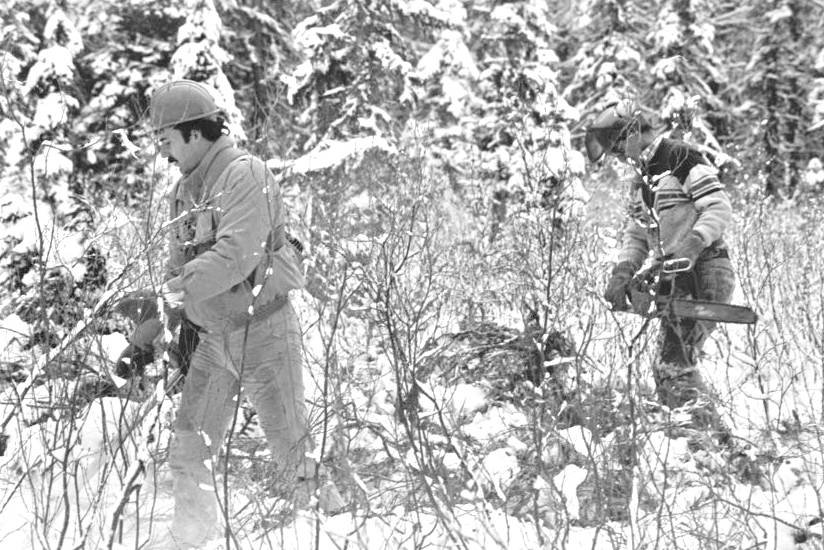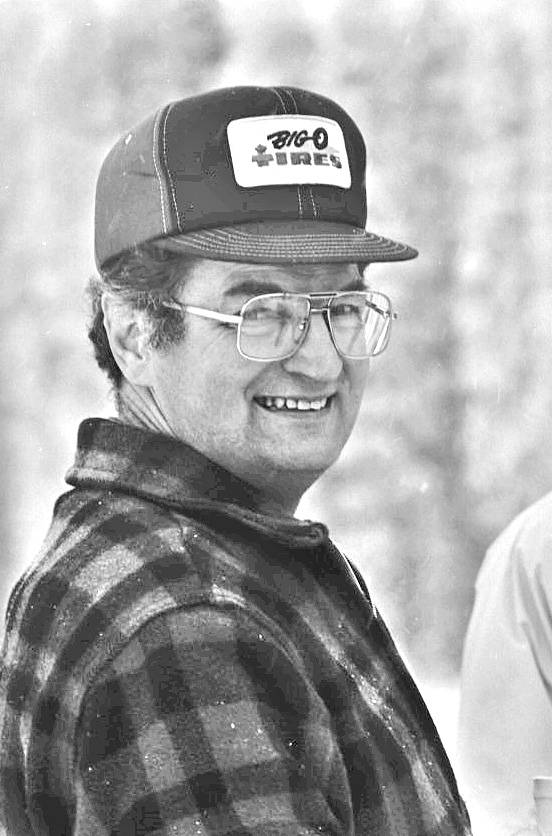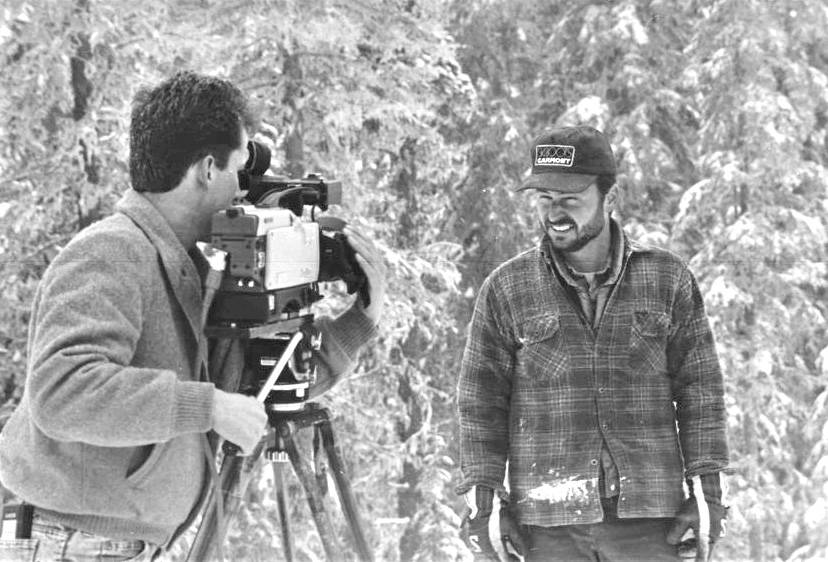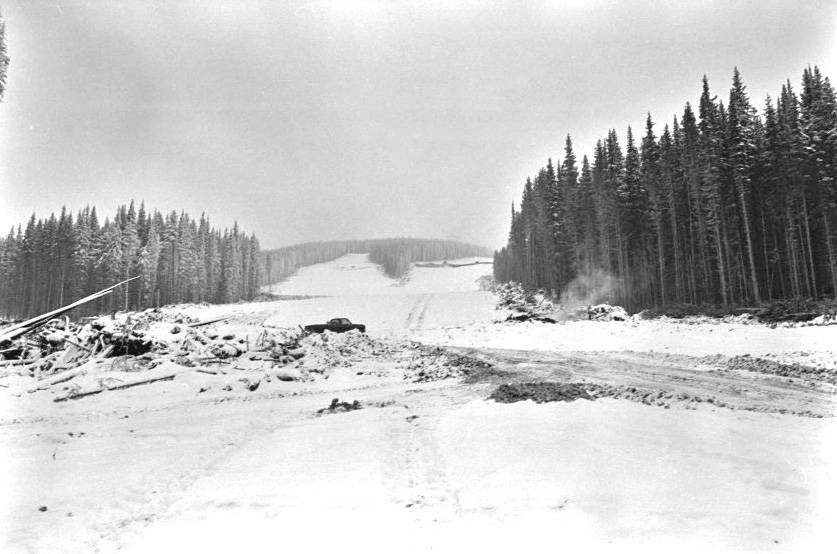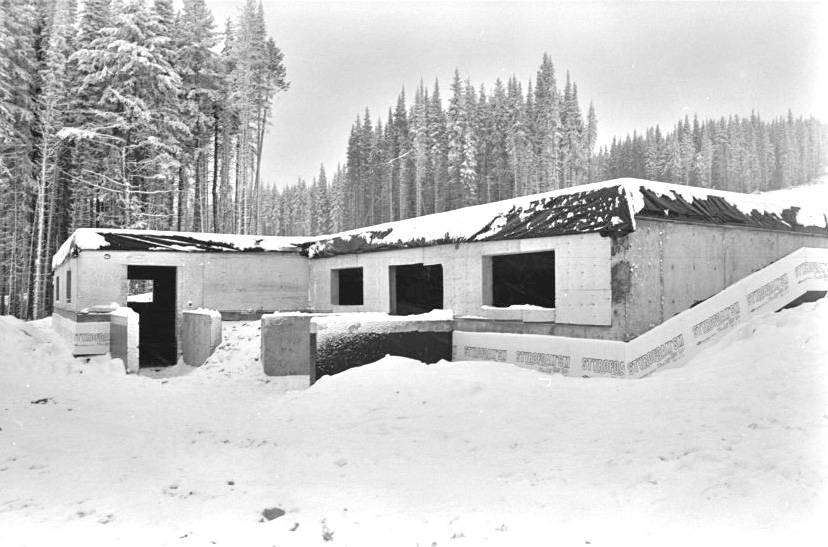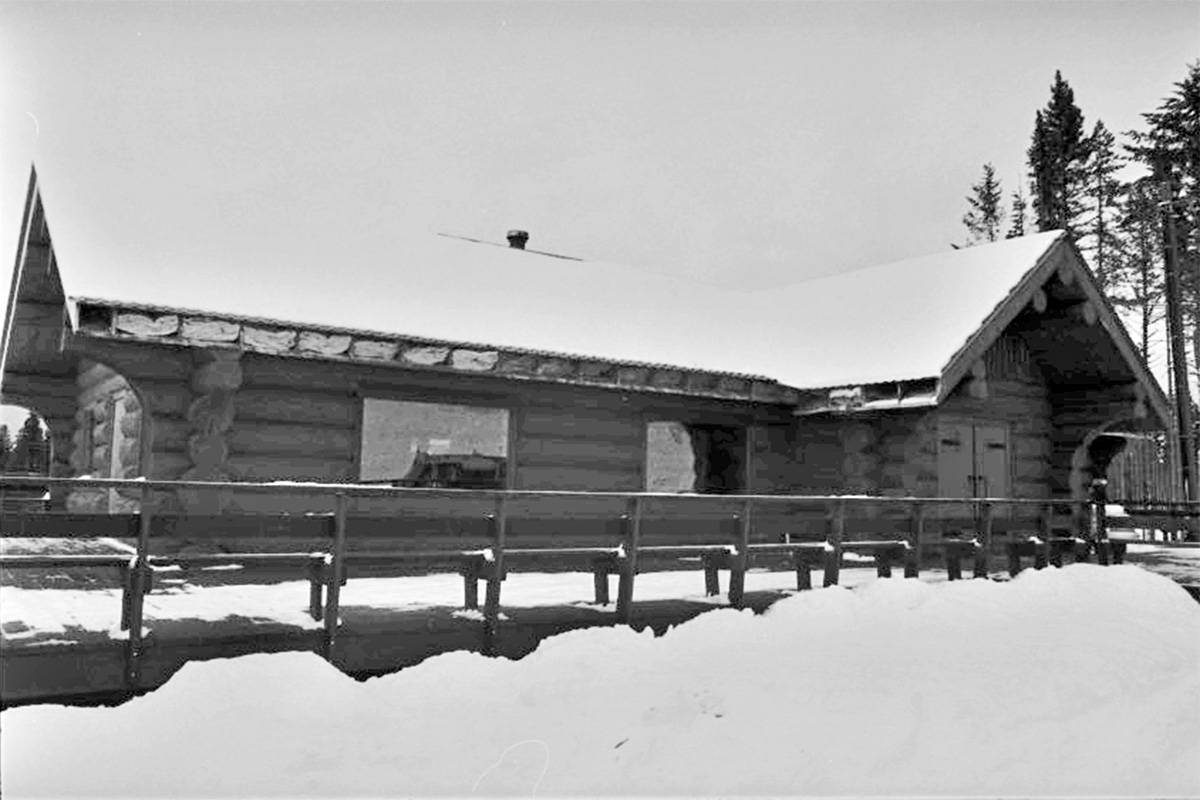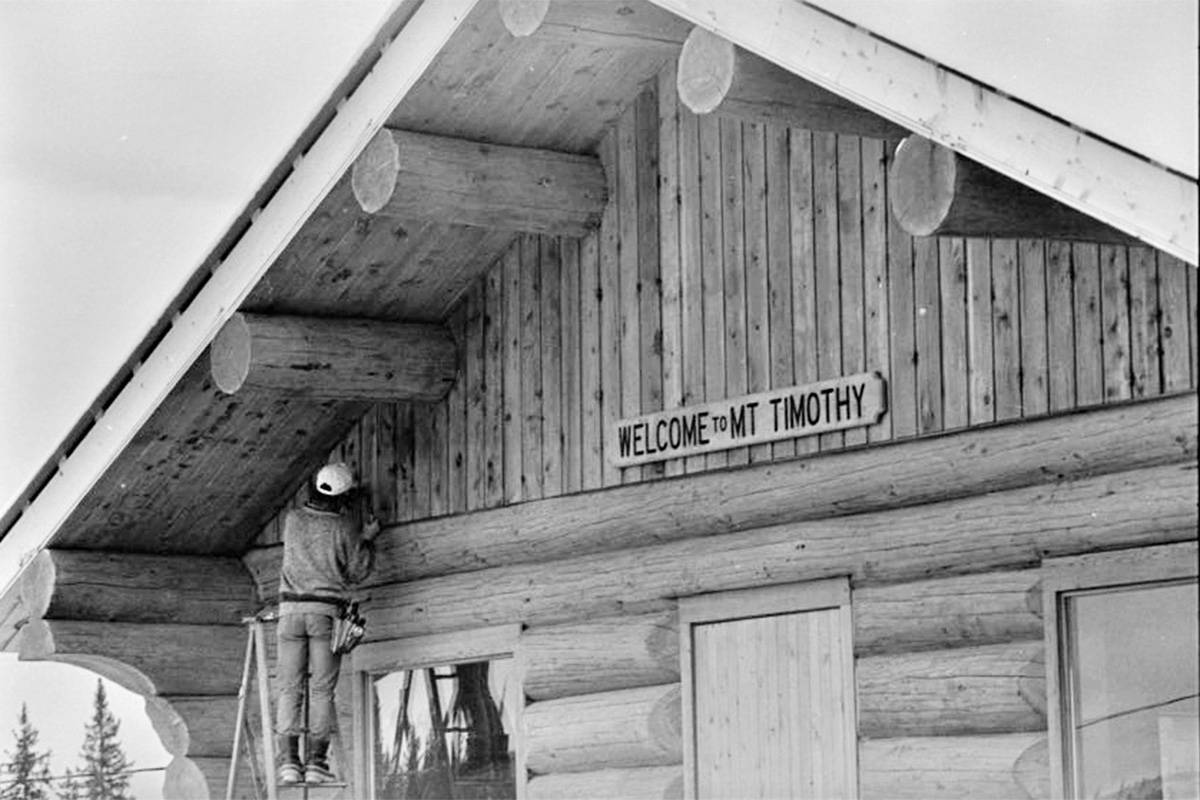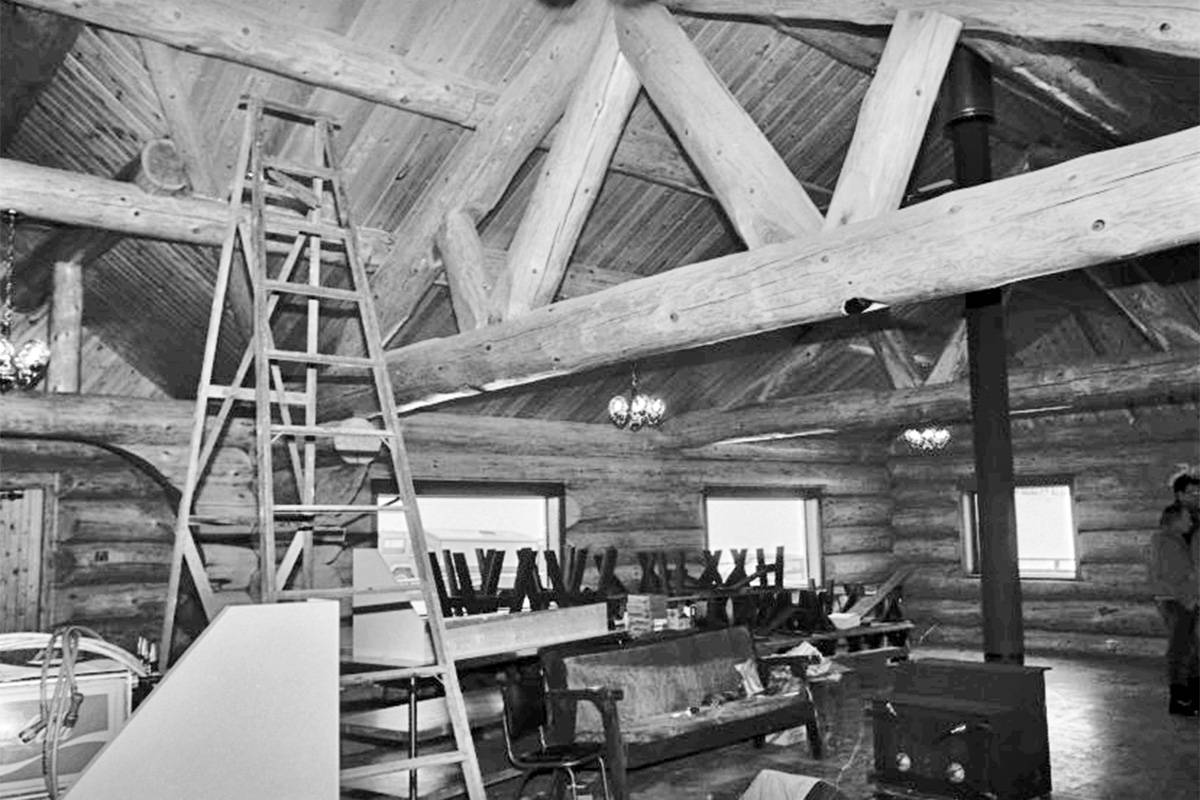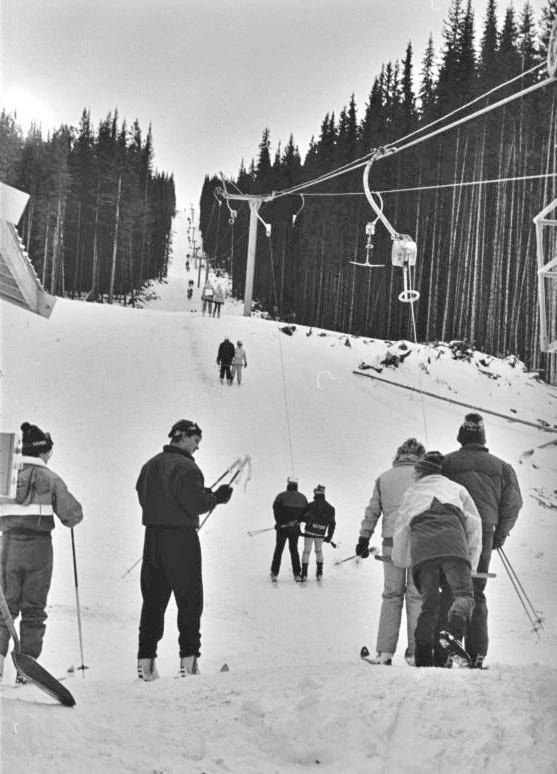Skiing in the Cariboo has a long history. Before Mt. Timothy, which re-opened as a ski destination on Dec. 23, 2019 after being closed for one year, was built, 100 Mile House and Williams Lake each had their own ski hill. 100 Mile House had a small hill overlooking the town and Williams Lake had what was originally the Squaw Valley ski hill and was renamed Timberland after a number of years.
Both of those went down because of a lack of snow, says Michael Kidston who’s been skiing in the area for decades.
“Those were viable hills when they were started in the late 60s early 70s. We had 10 years of nice big snowpacks and historical records will tell you we had the snowpacks for 30, 40 years before that.”
Due to the dwindling snowpack, both ended up looking for a new mountain. After separately submitting applications for land in the Mt. Timothy area, the 100 Mile House application was accepted and the two groups teamed up to build a new ski area and society. Stan Carey, public relations coordinator for the society in the early days, said at the time both 100 Mile House and Williams Lake were notorious for inadequate snow levels, something which he said wouldn’t be a problem at Mt. Timothy when it was ready to open in 1987.
Kidston was involved from the beginning when David Ainsworth, founder of Ainsworth Lumber Company, called him and Doug Cadrin, he says.
“I remember meeting in this office,” says Kidston, sitting in his office in 100 Mile House. “He said, ‘you wanna get a ski hill started? I’ve got the tenure rights, whatever, on Mt. Timothy’ and we both went ‘eh yeah that sounds like an idea.’”
Ainsworth opened up a drawer, pulled out a chequebook, wrote them [a cheque] for $5,000 and told them to incorporate, get insurance and come back when they needed more money, says Kidston.
“That was about ‘85.”
Bob Phaneuf, who worked for Ainsworth Lumber Company, became heavily involved in the development of the ski hill.
“I’m guessing Bob worked 80, 90 per cent of the time for Mt. Timothy, with Dave Ainsworth’s knowledge,” Kidston says with a laugh. Phaneuf had never strapped on a pair of skis before he got involved.
Sale of the timber produced the cash for the development for the hill, as well as government programs and Phaneuf said Ainsworth donated about $200,000 in time and equipment with the total development cost around $600,000 at the time of opening. Kidston was out of the country for a few months around the time some of the initial work on the hill was done.
“I remember coming back from my work down in the States just around the time the ski season was ready to start and the excitement was pretty high all over the community. Boy, we got a ski hill again after Williams Lake had been shut down for the better part of eight or 10 years and 100 Mile House had [re-]opened this hill for one season,” he says pointing to the hill above 100 Mile House.
That only lasted five or six weeks, says Kidston, adding that he still has a $1,000 lifetime season pass for it.
When Mt. Timothy opened in December 1987 (with an official opening in January 1988), there hadn’t been enough time to complete the lodge, meaning only the basement had been built.
“You sort of went into the basement door and the ceiling dripped constantly from the water coming through,” he says. “Nobody cared. We were skiing. Everybody was happy.”
The lodge itself went up soon after, with the finishing touches being put on in 1989.
“The extension of the lodge, looking at plans and records, I think was around 1996. Things were so busy, you couldn’t find a place to sit on any Saturday or Sunday.”
Next up, were plans for a chairlift.
“Around 2002 we got it going. Noel Thompson was the manager and had the vision to put the chairlift on.”
When it came time to vote, one concern was what would happen if there was a year with a bad winter, says Kidston. At one point, with the T-Bar, they’d had a year where they didn’t open until after mid-January, he says.
“We were in the hole big time at the end of that year.”
The financial hole would just be that much bigger with a chairlift, he says.
The chairlift project went ahead. They found one from Mt. Washington that they essentially took for the cost of taking it down and taking it, says Kidston.
“It sat two years in our parking lot while the prep work went up.”
There was a lot to do from design to putting the foundation for the towers in.
“Noel did most of it himself.”
The lift was fully built with just one final inspection left in December 2014.
“In some ways, the chairlift extended us beyond our means to pay. Yes, it increased ridership. Yes, we could increase prices [but] it increased costs considerably. We had to have way more staff, more maintenance, more safety stuff. If the T-Bar breaks down, you can get off it. If the chairlift breaks down, you’ve got a real problem,” he says. “We may have bitten off just a little bit more than we could chew and then you get a bad winter…”
With climate change, the snowpacks kept nudging down, says Kidston.
“Our last season, we lost Christmas entirely. We didn’t get going until January sixth, I think,” he says. “Last year, when we weren’t open, same thing. We’d have lost Christmas again. There was no way that the mountain could have run at that point,” says Kidston referring to the closure following financial difficulties. The hill was bought by the KevLar Development Group at the end of 2018.
Kidston looks back very fondly on all the years he’s been involved with the hill.
“We had some great years. My kids grew up on the hill. My son and daughter-in-law got married at Mt. Timothy. It’s the only wedding so far that’s been up there but that’s where they grew up. That was the family playground for a whole ton of people. There’s a lot of second and now third generation people skiing Mt. Timothy in that 30 year period. So no regrets, I just wish we could make more snow.”
Kidston is delighted with the new ownership, he says, adding that it’s both local and that the new owners know the community and the hill. Larry Henderson, one half of Mt. Timothy’s new ownership the KevLar Development Group, did a lot of the initial logging on the hill, says Kidston.
“He’s been up there since the beginning of time … We’re delighted that they’ve taken it over. They’ve put a lot of resources into it this year and have more for next year on the table ready to go. I couldn’t be happier that the right people stepped in.”
Kidston says he’s looking forward to snow and going skiing again.
“I’m hoping with the new management diversifying into more snowmobiling, putting in the tube park, looking to expand into a year-round [facility], that they can survive the downturns in the snow.”
RELATED: New owners resurrect Mt. Timothy ski hill
newsroom@100milefreepress.net
Like us on Facebook and follow us on Twitter.
